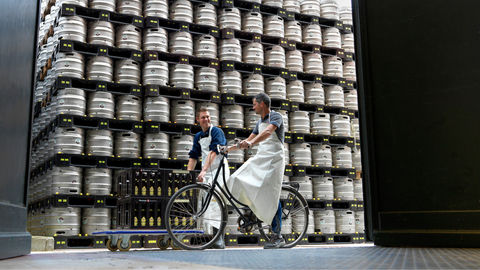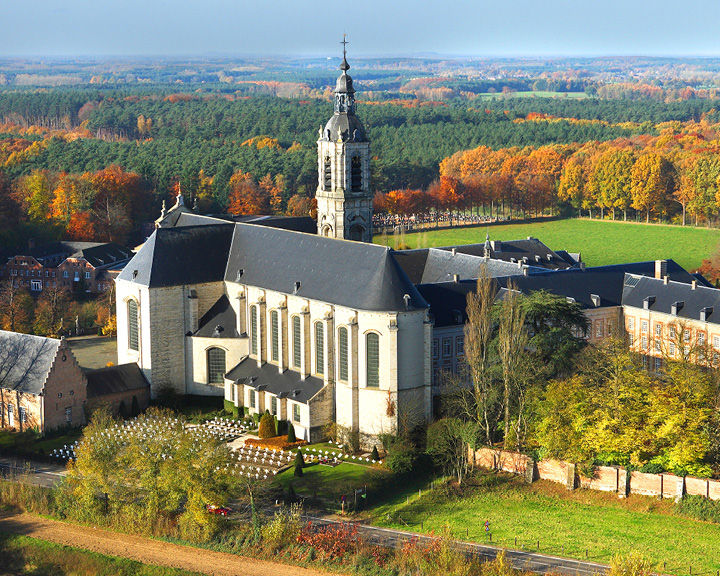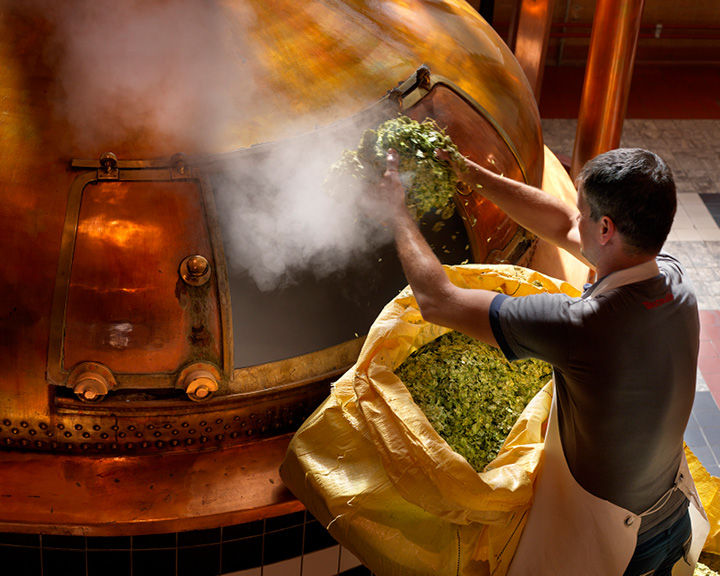
On a beer lover’s pilgrimage through the Trappist monasteries of Belgium, we explore the story behind the monks who brew beer. By Kasturi Gadge
When it comes to beer, the brewers in Belgium are considered to be the most adventurous in the world. The ample beer lovers in the country do their part by trying out a wide variety of brews. This is why taprooms in the major cities of Belgium flaunt the number of taps that they have running at the bar—some have as many as a hundred.
This may be a modern development, but the love for beer has been nurtured in Belgium since the 12th century. Back in those days, local abbey breweries brewed and distributed their beers to raise funds for the community and the church—with the permission of the Catholic Church. These brews also made for a sanitary drinking substitute for water. A few of these breweries are still functional and produce some of the finest artisan beers in the world under the supervision of Trappist monks. While a trip to Germany and Belgium is on every beer aficionado’s bucket list, a visit to these beer-making monasteries is as good as a pilgrimage.

Trappists are a religious order (Order of Cistercians of the Strict Observance) that branched off from the Cistercians. The term ‘Trappist’ came from a French abbey in Normandy called La Trappe, where the order was founded. The monks and nuns that follow the order are required to be self sufficient. This means they produce everything they consume. Earlier, the monks drank just water, but an 1836 reform allowed them to consume local alcoholic drinks, which led them to wine.
Hostility towards the Cistercian Order during the French Revolution resulted in the La Trappe abbey shutting down and its Trappist monks seeking refuge in Belgium and other neighbouring countries. In Belgium, they made Westmalle, Antwerp, and some parts of Flanders their settlements. Here, the wine-drinking French monks took to the local beers. And since they were required to produce what they consumed, they began brewing what we now call Trappist beers. Today, six of those original breweries continue to operate in Belgium—Chimay, Rochefort, Orval, Westvleteren, Westmalle, and Achel. There are six more in the Netherlands, Austria, America, and Italy.

As the beer gained popularity, an International Trappist Association was formed in 1997 to prevent any commercial brands from exploiting the ‘Trappist’ label. This was a private group of abbeys that later created a logo to be used for all their goods. So what qualifies as an authentic Trappist brew? Firstly, the brewing must happen in a Cistercian Trappist abbey under the supervision of Trappist monks. Secondly, all profits made from selling the items must be used for the functioning of the monastery or for charity.
ABBEY BEERS
Abbey beers are owned by corporations where Trappist monks may be involved in certain parts of the process and the beverages are made within a monastery. There are many such abbey beers brewed by monks, but not all of them fulfill the criteria for the ‘Trappist’ tag. A few such abbey beers include Leffe by AB InBev, which is produced in an abbey, and Averbode by Huyghe, which is the flagship beer of the famous Brussels bar, Delirium Cafe known for offering over 2,000 different beers.

THE NOMENCLATURE
Like most ales, Trappist beers go through a top fermentation process. They are categorised into four types based on their strength and alcohol content—Enkel, Dubbel, Tripel, and Quadrupel. The colours of the brews can help you tell them apart. For example, Chimay beers are labelled according to the colour in the bottle, while Westvleteren prefers to keep their bottles bereft of labels, and Rochefort numbers them according to their strength.

In Trappist beer terminology, Enkel stands for single; it is considered to be a mild beer that uses a basic recipe. Dubbel style was first created by the monks at Westmalle; it is fairly strong with an ABV (alcohol by volume) of up to eight percent. It is known for being heavy bodied and bitter. Tripel is a rather strong beer with an ABV going up to 10 per cent. The strongest one is Quadrupel, said to be first made in La Trappe.
WHEN IN BELGIUM
Belgium has the highest number of Trappist breweries, and most of the beers are bottled and sold for you to try. The most commonly spotted one is Chimay, fondly called the Trappist multinational. The brewery produces and sells way more than what the monks need. It is located in the abbey of Scourmont, and while it makes up to USD 46 million each year, the excess is used for charity. A few of their must-try beers include Chimay Red (seven per cent ABV), Chimay Triple (eight per cent ABV), and Chimay Dorée (4.8 per cent ABV).
Westvleteren, located at the abbey of Saint Sixtus in Vleterenis, is a small Trappist brewery and sells mostly at the monastery’s store or in bars near the abbey. You can have a pint here and head to the shrine right across for prayers (yes, it’s allowed). They are known for their award-winning Westvleteren 12, a quadruple. If you’re looking for something lighter, they have a Westvleteren Blond (5.8 per cent ABV).

Another easily available Trappist beer in the market is Orval. Having been rebuilt in 1931 after a fire destroyed the original brewery, they are known for raw hopping in order to get high fermentation beers that boast of a unique flavour profile. They only produce one beer with an ABV of 6.2 per cent. Brouwerij der Sint-Benedictusabdij de Achelse Kluis, or Achel, was destroyed during the French Revolution, but was reconstructed with the help of the Westmalle monks. It is said to produce the least amount of beer across the range and currently serves two exclusive beers at the abbey along with four others that are available in stores.
Located in French-speaking Belgium, La Brasserie de Rochefort is surrounded by nature. Just like Achel, the brewing process here was interrupted during the war. Currently, they function with 15 monks who make their famous stout Rochefort 10 (11.3 per cent ABV) along with two more brews. The dubbel maker, Westmalle in Antwerp, just like Chimay, produces a large quantity of beer to be sold in the market. It currently functions on a bottling capacity of 45,000 beers per hour. Along with the seven per cent ABV dubbel, they also make the Westmalle Tripel and Westmalle Extra (five per cent ABV).
SERVING AND PAIRING
Most Trappist monasteries produce cheese and bread as well. The best way to enjoy a Trappist beer is to pair it with cheese sourced from the same monks who brewed the beer. Names you could look for include Affligem, Averbode, Maredsous, and Westmalle. Moreover, every beer has its dedicated glass—even at a regular bar in the country. Trappist beers use a chalice-type glass. Unlike a goblet, this glass is thicker and heavier with an etching at the bottom to release more bubble, ensuring a frothy head. Next time you’re in Belgium, raise a toast to the Trappist monks and get a pint of the finest beer of the land. À votre santé!

THE DETAILS
STAY
Out of the six abbeys that produce Trappist beers in Belgium, a few like Sint-Sixtus Abbey, Orval Abbey, and the Abbey of Our Lady of Saint-Rémy, allow you to observe life in the
monastery and live with the monks in special guesthouses. For those that don’t provide this access, you can sample the beers at cafes run by the monks. You can also camp out in
Brussels, and do road trips to Orval (185km) and Rochefort (117km). Or, spend the night in Hôtel Restaurant L’espine, an hour from the Orval Abbey.
TOUR
Sign up for a mini Trappist tour with Belgian Beer Me! or go all out with their 10-day Lonely Monk Tour (from INR 28,518) that takes you through Belgium and Netherlands, sampling the best beers on the way.










